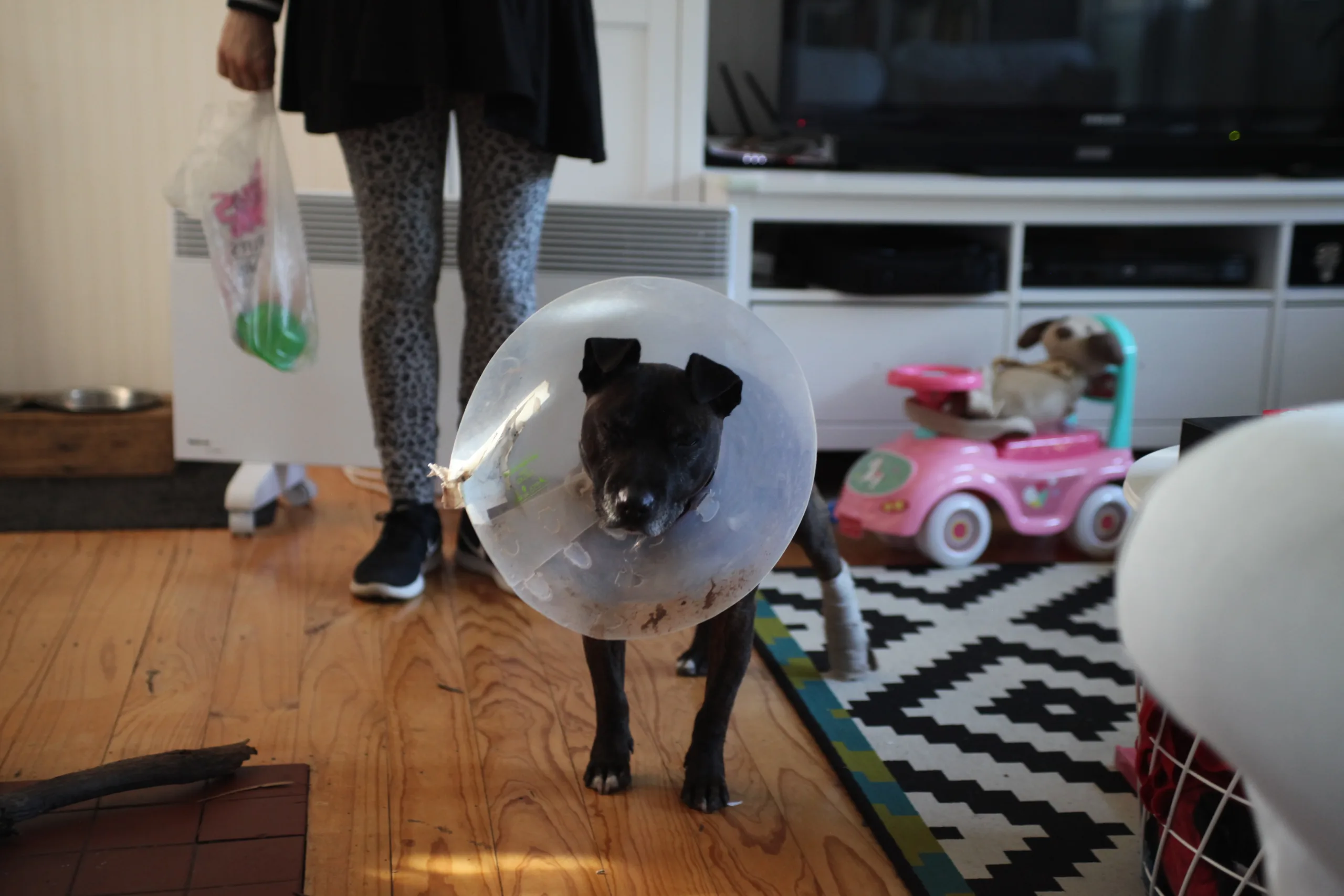Introduction
After the neuter surgery, dogs often sport an accessory that prompts both curiosity and concern: the infamous cone, also known as an Elizabethan collar or E-collar. This protective device plays a crucial role in your dog’s recovery, preventing them from licking or gnawing at the surgical site. However, the duration for which dogs should wear the cone post-neuter varies, raising questions about when it’s safe to bid farewell to this cone of constraint. In this article, we explore the factors influencing cone duration, signs of healing, and considerations for your dog’s comfort during recovery.
For more about dogs click here
The Importance of the Post-Neuter Cone
Neuter surgery, or castration, involves the removal of a male dog’s testicles. While the procedure is routine, the incision site is vulnerable to licking, chewing, or scratching, which can hinder healing and lead to infection. The cone acts as a protective barrier, preventing direct access to the incision and allowing it to heal undisturbed.
Factors Influencing Cone Duration
The duration a dog should wear the cone after neuter depends on various factors:
- Healing Progress: Each dog’s healing timeline is unique. Some may recover faster than others, influencing how long they need the cone.
- Veterinarian’s Recommendation: Your veterinarian will provide guidance on cone duration based on the surgical technique, your dog’s health, and the anticipated healing process.
- Activity Level: Active dogs might require the cone for a longer period to prevent excessive movement that could compromise healing.
- Incision Location: The location of the incision plays a role. Incisions in hard-to-reach areas may necessitate longer cone use.
- Dog’s Behavior: If your dog shows a strong inclination to lick or bite the incision, extended cone use might be necessary.
Canine Comfort and Cone Use
While the cone serves a crucial purpose, it can be uncomfortable for dogs, affecting their ability to eat, drink, and move freely. To mitigate discomfort:
- Monitor Interaction: Keep a watchful eye on your dog’s interactions with the cone. If they’re struggling excessively, consult your veterinarian.
- Regular Breaks: Allow short breaks from the cone under supervision to eat, drink, and stretch.
- Cone Alternatives: In some cases, soft or inflatable collars might be more comfortable alternatives to the traditional cone.
Signs of a Healed Neuter Incision
Before considering cone removal, ensure that your dog’s neuter incision has healed adequately. Signs of healing include:
- Closed Incision: The incision site should be closed without any visible gaps or openings.
- Reduced Redness and Swelling: Inflammation and redness should subside, and swelling should diminish.
- Minimal Discharge: Discharge from the incision should decrease and become clearer over time.
- No Signs of Infection: There should be no signs of infection, such as increased redness, warmth, foul odor, or excessive discharge.
The Dilemma of Cone Removal
The decision to remove the cone should be made in consultation with your veterinarian. While it might be tempting to remove it early, premature removal could lead to complications or prolonged healing.
FAQs About Dogs and Cone Usage After Neuter
1. Can I take my dog’s cone off after 7 days?
Cone removal should be based on your veterinarian’s recommendation and the healing progress. Seven days might be too soon; consult your vet.
2. Should a dog sleep with a cone after neuter?
Yes, it’s recommended for dogs to wear the cone even during sleep to prevent licking or chewing the incision site.
3. Can a dog sleep in a cone?
Yes, dogs can sleep in a cone. While it might be uncomfortable initially, dogs can adapt to sleeping with the cone.
4. How do I know if my dog’s neuter is healed?
A healed neuter incision will have closed edges, reduced redness, swelling, minimal discharge, and no signs of infection.
5. Can I take my dog’s cone off before 10 days?
The timing for cone removal depends on healing progress. Consult your veterinarian before making the decision.
6. Can my dog lick his incision after 14 days?
Licking the incision after 14 days might still pose a risk. Always consult your veterinarian before removing the cone.
Navigating Neuter Recovery for Your Canine Companion
Neuter surgery and the post-operative period require careful attention to ensure your dog’s comfort and healing. Balancing your dog’s well-being with the need for proper incision care is crucial for a successful recovery.
Conclusion on How Long Do Dogs Wear Cone After Neuter?
The cone post-neuter is not just a peculiar accessory—it’s a shield that safeguards your dog’s recovery process. While the duration of cone usage varies, always prioritize your dog’s well-being and adhere to your veterinarian’s guidance. By doing so, you contribute to a smooth and uneventful recovery, allowing your loyal companion to return to their active and joyful self.
Click here for more
